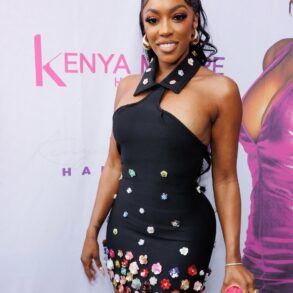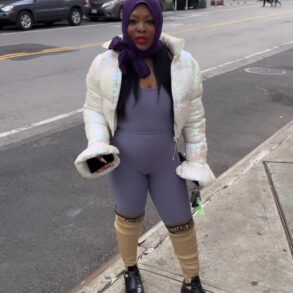It’s mid-November and you’re starting to think that you should be starting to think about your holiday shopping list.
But the brands and the retailers behind the colorfully packaged sets of beauty products that are mainstays of seasonal shopping are way ahead of you.
“We kind of joke that we’re never not talking about Christmas,” said Melissa McGinnis, who oversees the beauty category at the British retailer Selfridges, “because we’re either in Christmas or we’re planning for Christmas.”
Around this time last year, when the discussion, at least in the United States, was all about the inflationary cost of Thanksgiving turkey and trimmings, Ms. McGinnis and her team of 14 began working on the store’s 2023 beauty gifts lineup, including its perennially popular Advent calendar, which Selfridges has sold since 2010.
This year’s version, in burgundy, opens like a multilevel jewelry box from the 1940s, the lower drawers sliding out and their 25 small compartments hiding items from brands such as Charlotte Tilbury, Augustinus Bader and Byredo. It is priced at 220 pounds, or $245 in the United States.
(There are multiple schools of thought about exactly how many compartments an Advent calendar should have. Some say 24, finishing on Christmas Eve, the traditional choice, but others want the Dec. 25 spot for a final big reveal. And then there are the iconoclasts who seem to choose whatever numbers suit.)

Shoppers were likely still on their 2022 summer vacations when the London department store Liberty started working on the Advent beauty calendar now on its shelves.
“It is a long process and part of the reason for that is the complexity of these calendars, because you’ve got 29 products and 29 different suppliers that you’re dealing with,” said Sarah Coonan, the store’s managing director of retail. “The volumes are quite big; you’ve got to manufacture and design a box. There’s an awful lot of work that goes into it, and the time that’s spent just iterating the lineup is one of the things that takes the longest.” (At Liberty’s warehouse in Derby, about 125 miles northwest of its Regent Street flagship, a large area is permanently set aside to store the items that eventually will be hidden behind the paper doors.)
This year Liberty has two Advent beauty calendars, both in packaging featuring the store’s half-timbered facade and pointed roofs. The colorful women’s version has 25 compartments but 29 products, as some are doubled up, and is priced at £250, or $320 in the United States. The men’s version is black and white, with 25 items including Claus Porto soap from Portugal and Marvis toothpaste from Italy, and is priced at £230 or $295.
Many other retailers have their own Advent beauty calendars that have become anchors of their holiday beauty offerings, such as Neiman Marcus and Saks Fifth Avenue in the United States and Harrods, Harvey Nichols and Fortnum & Mason in England. And there are plenty from beauty brands, too, including Molton Brown, Jo Malone London, Yves Saint Laurent Beauty and Fresh.
Relying on the Season
There is a reason for all the careful strategizing: Retailers and the beauty industry rely on the holiday season for a large percentage of their annual sales.
“I know that Christmas gifting is very, very lucrative because I bought a house based on one year’s Christmas gifting,” said Millie Kendall, chief executive of the British Beauty Council, a nonprofit industry advocacy group. The house was because of Ruby & Millie, a beauty brand, now defunct, that she helped establish, which created holiday gift sets for the British health and beauty retailer Boots.
In the United States, sales of prestige beauty products — the brands sold in department stores and by upscale retailers like Sephora — between October and December 2022 totaled $9.2 billion, a third of the category’s $27.5 billion annual revenue that year, according to the marketing firm Circana.
And seasonal gift sets also have global appeal, even in countries where the Christian celebration is not particularly prevalent.
“Christmas here has evolved into a more commercial festival where sales and these fancy-looking packaged products will be introduced by brands,” said Yang Hu, an insight manager for Euromonitor International in Seoul who focuses on Asian health and beauty trends.
Value vs. Price
Value is a strong marketing point for Advent calendars. A recent Google search for Selfridges’s 2023 version, for example, turns up the major link line: “SELFRIDGES — Beauty Advent calendar worth £1094+”
Many brands do the same with less elaborate offerings, like the Nice List Lashes set from Benefit Cosmetics, which notes the $48 box set is a $99 value.
Drunk Elephant is offering its Trunk 7.0, with 10 full-size items in a bright green backpack, for $465, but says it is valued at $639. And the hair care brand R+Co has a Dreamscape Must-Haves kit, in a metallic bag, priced at $165; it says the eight items would cost $233 if purchased separately.
“Consumers want a pretty design, but at the same time they also want the more affordable price,” Ms. Hu said.
And special packaging, she noted, is “a way for a brand to have discounts without their price being really discounted.”
But trumpeting value can be tricky in this era of social media, as Chanel found out in 2021 with its first foray into the genre, an offering in the shape of its Chanel No. 5 bottle to celebrate the perfume’s 100th anniversary.
A TikTok influencer doing an unboxing video so popular at the time was shocked that the $825 calendar included stickers, sample-size products and the kind of dust bag generally included free with the purchase of a luxury product. Last year, Dior’s $3,500 version received a similarly frosty reception online.
It couldn’t have been all bad, though, as both brands said the limited-edition calendars sold out almost immediately.
This year Chanel doesn’t have a beauty Advent calendar, but it does have a selection of seasonal boxed gift sets, including one with both a No. 5 perfume and a scented body oil. And Parfums Christian Dior has two Advent offerings, both with 24 drawers: One priced at 600 euros, or $750 in the United States, and La Malle des Rêves 2023 (in English, The Trunk of Dreams), a lavish wooden version at €3,600 or $4,200 in the United States.
Sales Boosts
The sales boosts that new products can get by being included in special holiday offerings are also important to both brands and stores.
Le Labo’s Eau de Parfum Discovery Set 6X5ML, for example, includes Lavande 31, a fragrance it introduced in October. And Selfridges’s beauty Advent includes two nail polishes from Pleasing, the brand by the pop star Harry Styles.
The holiday beauty set from the Paris department store Le Bon Marché, owned by LVMH Moët Hennessy Louis Vuitton, is a gold velvet pouch with 14 items from brands that might be new to some customers, including Hervé Herau, Glowery and Dreem Distillery, as well as better-known ones like Tata Harper, Dr. Barbara Sturm and Westman Atelier.
“Maybe the customer will buy it for Tata Harper, but in it she will discover exclusive and niche brands,” said Marion Ponvienne, the store’s beauty director. “For us, it’s a way to attract new customers.”
The strategy seems to be a prevalent one. Ms. Kendall said that in past years some of her organization’s members have seen items in a holiday gift set experience sales increases of as much as 50 percent in the following six months.
And when Liberty included a 15-milliliter bottle of Le Labo’s Thé Noir 29 in its 2015 calendar, the scent became the store’s best-selling fragrance for about two years. As Ms. Coonan put it, “That product went absolutely bananas.”
Sustainability
And this year, many beauty sets include full-size products instead of tiny miniatures. The larger sizes make sense, “especially if you want the consumer to use a product enough so that they want to purchase it again,” said Anna Keller, a senior global beauty and personal care analyst at the market research company Mintel. “I think for skin care or body care, that is more effective: just using a little amount of it is not going to win you over — it’s not going to give you the benefit that’s going to make you go and purchase the whole thing at the end of the day.”
Ms. Kendall added: “What you don’t want to do is go out to a manufacturer, create a load of smaller sizes, and then pop them into an Advent calendar: it’s very costly and it’s not very sustainable.”
The appeal of Advent calendars continues to be strong. Selfridges’s 2023 version was released on Sept. 22; six weeks later, the store reported, it had sold 80 percent more calendars than during the same time period in 2022.
Still, for some consumers, “they feel very expected at this point,” Ms. Keller said. Strategically, she added, it’s better for brands, “to think of Advent calendars as more of a mini-sampling experience,” so they can “really tie into that idea of small, highly giftable products that either you can gift yourself or share with other people.”
Perhaps for that reason, some brands’ holiday sets this year are more Advent-inspired than traditional.
The French fragrance brand Maison Francis Kurkdjian has a €950 Countdown Calendar, meant to be opened between Dec. 25 and New Year’s Eve.
And from Hermès, there are 24 nail polishes in a €1,420 circular box with the center cut out to suggest — loosely, considering it is in the brand’s distinctive shade of orange — a wreath.
“Where brands and retailers don’t evolve the design or the product inclusions, you’ll see customers say, ‘It’s too similar to last year’s,’” Ms. McGinnis said. “They really are looking for something that’s going to surprise them.”
This post was originally published on this site be sure to check out more of their content.








